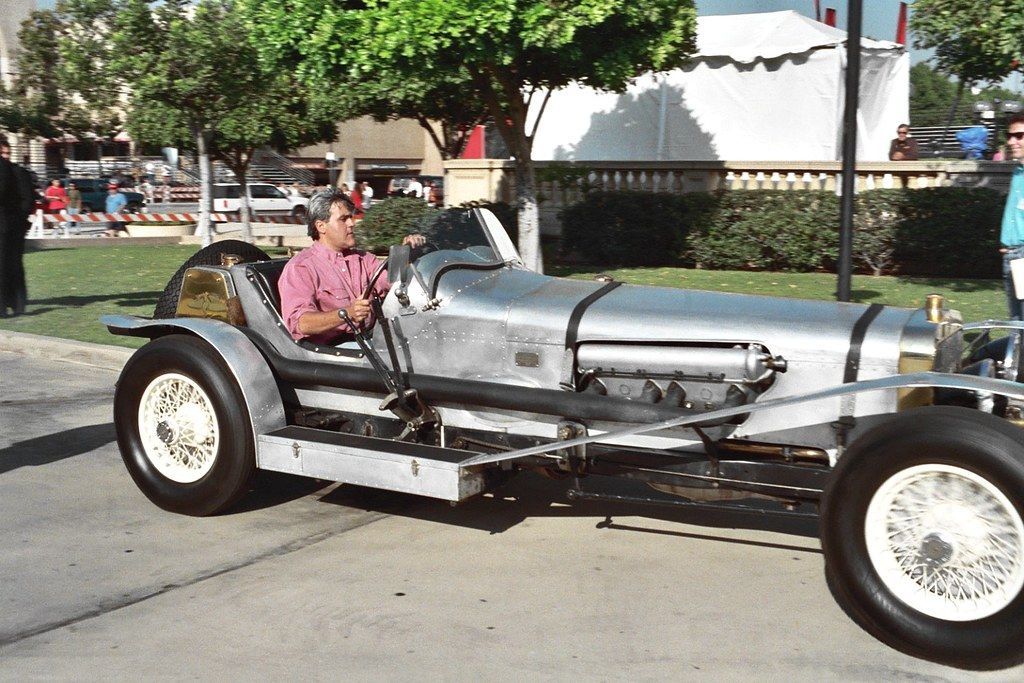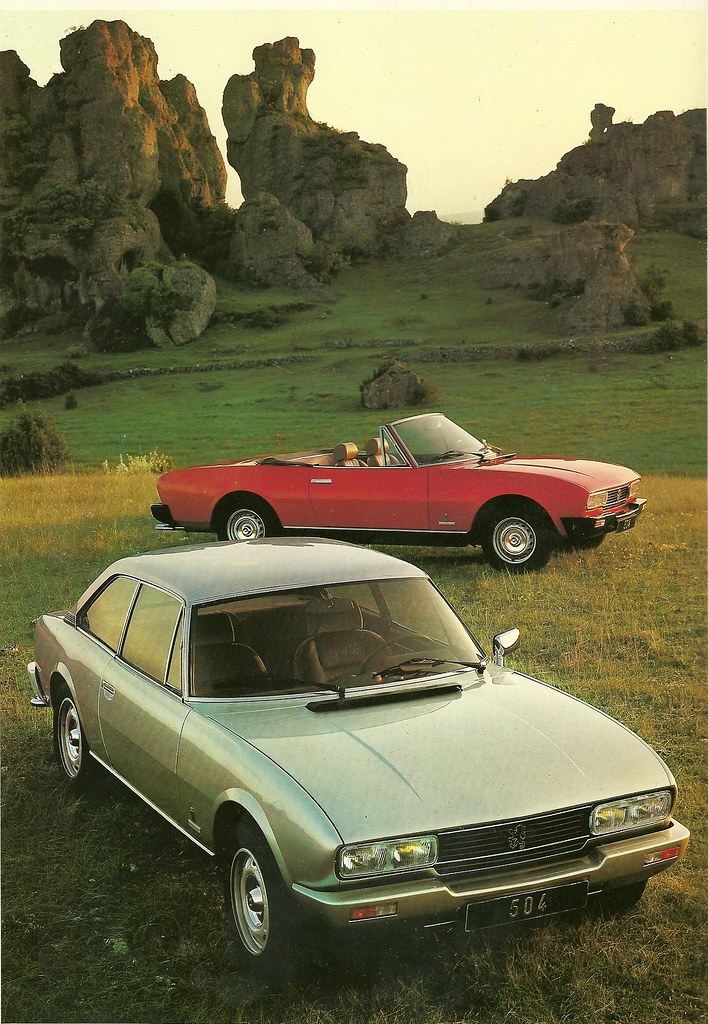For decades, the automotive industry has been synonymous with steel, aluminum, and an array of petroleum-based plastics, a robust yet resource-intensive foundation that built the modern world of transportation. However, a profound transformation is now underway, driven by an urgent global imperative for sustainability and an insatiable appetite for innovation. Manufacturers are no longer content with incremental improvements; they are reimagining the very fabric of our vehicles, venturing into uncharted territories with unconventional materials that promise a future where cars are as kind to the planet as they are exhilarating to drive.
This isn’t merely a trend; it’s a fundamental recalibration of engineering principles and design philosophy. The focus has shifted dramatically from sheer power and traditional aesthetics to a holistic approach that embraces lightweight construction, enhanced durability, improved fuel efficiency, and a drastically reduced environmental footprint. From the lush forests that yield rapidly renewable bamboo to the ingenious reprocessing of discarded plastics and plant fibers, the palette of automotive materials is expanding in ways once thought unimaginable, paving the way for a circular economy where every resource is valued and waste is minimized.
Indeed, the concept of a car crafted from wood, hemp, or even recycled jeans isn’t a flight of fancy but a tangible reality, with a growing number of automakers embracing these radical alternatives. This forward-thinking movement not only addresses critical environmental concerns but also unlocks groundbreaking design possibilities, allowing for unique aesthetics and enhanced functionality that captivate a new generation of eco-conscious consumers. Join us as we journey through the vanguard of this material revolution, exploring the pioneering vehicles that are literally building the future of mobility with ingenuity and natural resources.
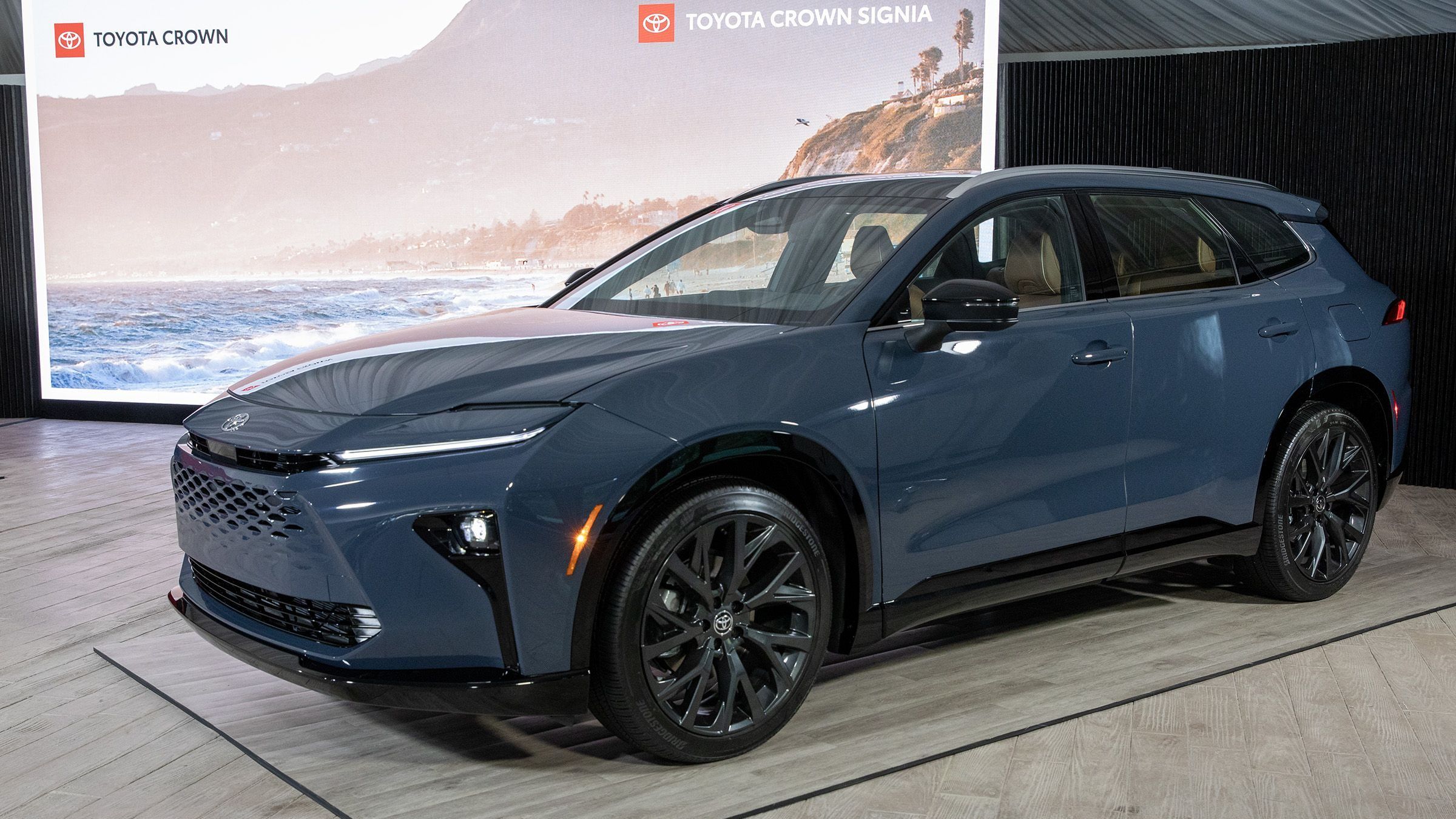
1. Toyota Setsuna Concept: Weaving Time and Nature into Automotive Design
The Toyota Setsuna Concept stands as a truly revolutionary statement, transcending the conventional understanding of a car to become a living, evolving piece of art. This vehicle, whose name fittingly means ‘moment’ in Japanese, is not just made of bamboo; it embodies the philosophy of time itself, designed to age gracefully and be passed down through generations, acquiring a unique patina and story over time, much like a cherished wooden heirloom. Its existence challenges the throwaway culture, emphasizing longevity and the beauty of natural degradation.
At its core, the Setsuna utilizes bamboo and other wood materials for its entire body panels and interior, showcasing an extraordinary commitment to natural resources. Bamboo, celebrated for its rapid renewability and inherent strength, emerges as an eco-friendly choice, offering a compelling alternative to materials with heavier environmental impacts. The lightweight nature of bamboo panels contributes directly to improved fuel efficiency, an ever-critical metric in automotive design, without sacrificing structural integrity.
Beyond the raw material, the Setsuna’s design philosophy embraces natural aesthetics, creating a warm, organic, and timeless look that stands in stark contrast to the often-cold, industrial feel of modern vehicles. Every curve and joint speaks to a deeper connection with nature, inviting occupants to experience a sense of calm and authenticity. Furthermore, its fully biodegradable construction ensures that at the end of its exceptionally long life, the car minimizes its environmental impact, seamlessly returning to the earth from which its materials were sourced.
The Setsuna Concept, therefore, is more than a vehicle; it’s a profound demonstration of how renewable materials like bamboo can fundamentally replace traditional options, seamlessly blending cutting-edge functionality with an unwavering commitment to sustainability. It serves as a beacon, illustrating a future where cars are not just machines, but conscious creations that respect both their passengers and the planet.
Car Model Information: 2023 Hyundai SANTA FE SEL 2.4
Categories: All Wikipedia articles in need of updating, All Wikipedia articles written in British English, All articles needing additional references, All articles with dead external links, All articles with unsourced statements
Summary: Toyota Concept Vehicles produced between 2010 and 2019 include:
Get more information about: Toyota concept vehicles (2010–2019)
Buying a high-performing used car >>>
Brand: Toyota Model: Setsuna Concept
Price: $21,499 Mileage: 18,514 mi.
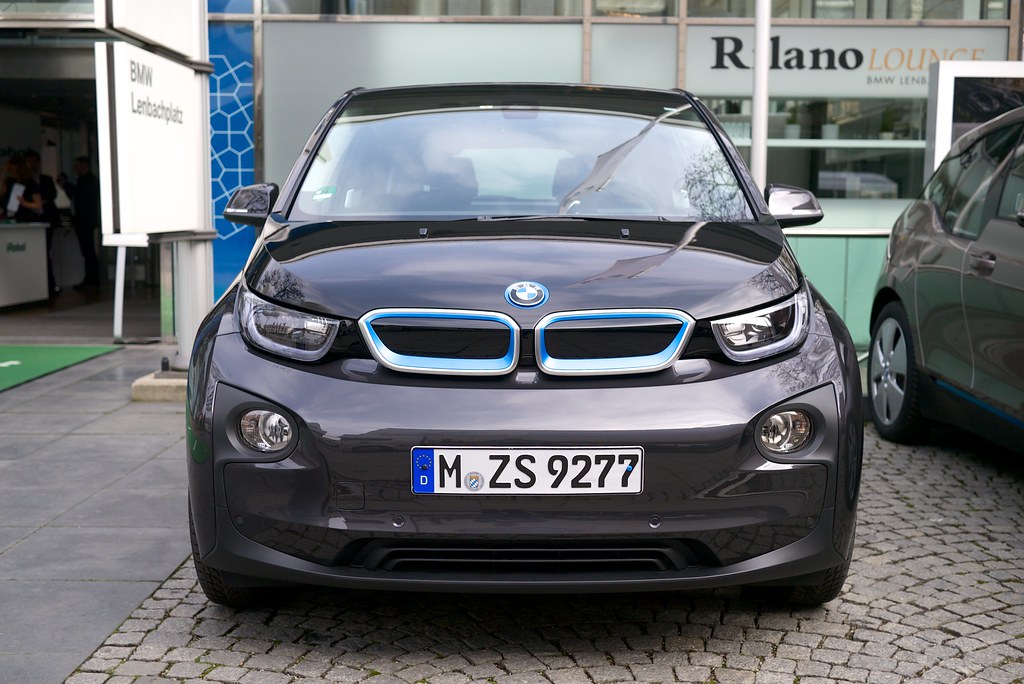
2. BMW i3: The Lightweight Revolution Forged in Carbon-Fiber-Reinforced Plastic
The BMW i3 dramatically reshaped perceptions of electric vehicles upon its debut, not just for its pioneering electric powertrain but, crucially, for its extensive and innovative use of carbon-fiber-reinforced plastic (CFRP) in its body structure. This material choice was a bold declaration by BMW, signaling a radical departure from conventional metal chassis construction and firmly establishing the i3 as a harbinger of a new era in automotive engineering where lightness and strength converge for unprecedented efficiency.
CFRP is a marvel of modern material science: incredibly strong yet remarkably lightweight. Its application in the i3 allowed for a significant reduction in the vehicle’s overall weight, a critical factor for electric cars where every kilogram saved directly translates into improved range and dynamic performance. This innovation didn’t just trim fat; it re-engineered the very essence of the car’s structure, proving that plastic materials, when intelligently engineered, can outperform traditional metals in specific applications, especially when coupled with stringent safety and durability requirements.
The benefits extend beyond mere weight reduction. CFRP is inherently corrosion-resistant, ensuring the longevity of the vehicle’s structure and reducing maintenance needs over its lifespan. This characteristic is particularly advantageous for an electric vehicle, which is often envisioned as a long-term investment. The enhanced driving dynamics achieved through this reduced weight contribute to a more agile, responsive, and ultimately more enjoyable driving experience, challenging the notion that eco-friendly cars must compromise on performance.
In essence, the BMW i3 is a prime example of how advanced plastic materials can revolutionize the structural design of cars. By embracing CFRP, BMW not only pushed the boundaries of vehicle performance and efficiency but also made a substantial contribution to the ongoing dialogue about sustainability, demonstrating a clear path for reducing material consumption and energy expenditure in manufacturing.
Car Model Information: 2015 BMW i3 Base
Name: BMW i3
Manufacturer: BMW
ModelCode: I01
Production: September 2013 – August 2022 (250,000 units)
Assembly: Leipzig
Successor: BMW iX,BMW iX1,BMW i4
Class: Supermini
BodyStyle: hatchback
Doors: Suicide doors
Layout: Rear-motor, rear-wheel-drive
Chassis: Body-on-frame
Motor: BMW eDrive synchronous permanent magnet motor 125 kW
137 kW
Battery: kWh
ElectricRange: ampere hour,Convert,United States Environmental Protection Agency,Range extender (vehicle)
Engine: Straight-twin engine,range extender,9 L
Abbr: on
Transmission: Single speed with fixed ratio
Drivetrain: Series hybrid,plug-in hybrid,Range extender
Charging: Combo Coupler
Wheelbase: 2570 mm
Length: 3999 mm
Width: 1775 mm
Height: 1578 mm
Weight: 1195 kg
Sp: uk
Designer: Richard Kim (car designer)
ModelYears: 2014–2021 (North America)
Categories: All articles containing potentially dated statements, All articles with dead external links, Articles containing potentially dated statements from December 2019, Articles containing potentially dated statements from December 2021, Articles containing potentially dated statements from February 2014
Summary: The BMW i3 is an electric car that was manufactured by German marque BMW from 2013 to 2022. The i3 was BMW’s first mass-produced zero emissions vehicle and was launched as part of BMW’s electric vehicle BMW i sub-brand. It is a B-segment, high-roof hatchback with an electric powertrain. It uses rear-wheel drive via a single-speed transmission and an underfloor lithium-ion battery pack with an optional range-extending petrol engine.
Styled by Richard Kim, the i3 is a five-door with a passenger module of high strength, ultra-lightweight carbon fibre reinforced polymer adhered to an aluminium chassis, battery, drive system and powertrain. The body features two clamshell rear-hinged rear doors.
The i3 debuted as a concept at the 2011 International Motor Show Germany, and production began in September 2013 in Leipzig.
It ranked third amongst electric cars sold worldwide from 2014 to 2016. Its global sales totaled 250,000 units by the end of 2022. Germany was its biggest market with over 47,500 units delivered through December 2021, followed by the U.S. with over 45,000.
The i3 won two World Car of the Year Awards, selected as 2014 World Green Car of the Year and as 2014 World Car Design of the Year. The i3 received an iF Product Design Gold Award, and won UK Car of the Year 2014 and Best Supermini of 2014 in the first UK Car of the Year Awards.
Get more information about: BMW i3
Buying a high-performing used car >>>
Brand: BMW Model: i3
Price: $8,998 Mileage: 47,283 mi.
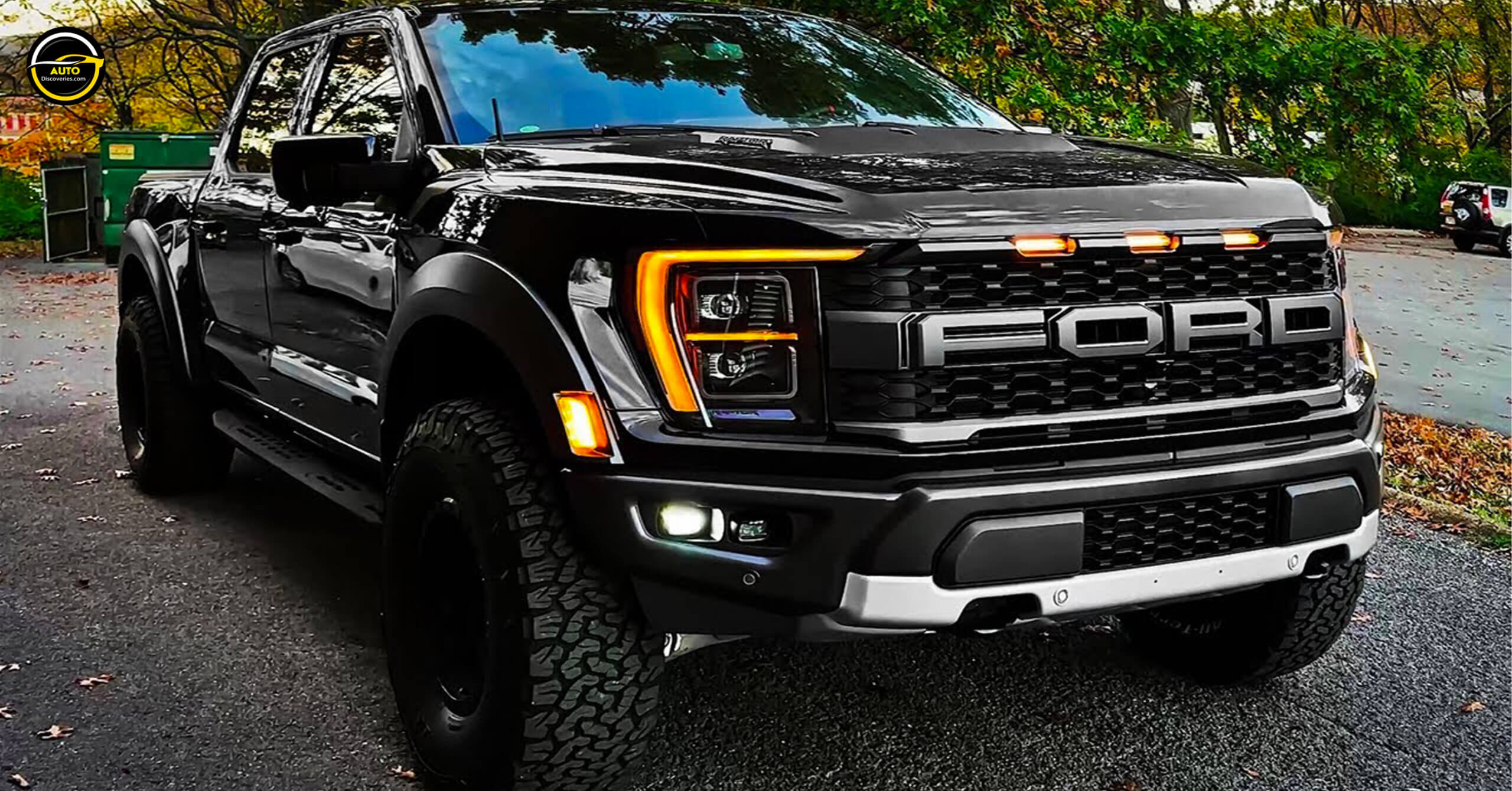
3. Ford Model T (Hemp Version): Henry Ford’s Visionary Foray into Plant-Based Automotive Design
Long before modern environmental concerns sparked a widespread interest in sustainable materials, Henry Ford, a titan of industrial innovation, embarked on a groundbreaking experiment: a hemp-based version of his iconic Model T. This ambitious project, though it never entered mass production, was a testament to Ford’s forward-thinking vision, highlighting the immense potential of plant fibers as a viable and superior alternative for car manufacturing, far ahead of its time.
The car’s body panels were ingeniously crafted from hemp fibers, a material that embodies renewability and biodegradability while boasting impressive strength-to-weight characteristics. This was not merely an eco-conscious choice but a practical one, as Ford famously showcased the material’s resilience. The hemp panels were reported to be ten times stronger than steel, yet significantly lighter, offering a combination of durability and efficiency that contemporary materials struggled to match. This strength was not just anecdotal; it was a cornerstone of the material’s appeal, promising enhanced safety and structural integrity.
Moreover, the production of hemp fibers requires considerably less energy compared to the intensive processes involved in manufacturing steel or aluminum. This lower energy consumption during production translates directly into a reduced carbon footprint, aligning perfectly with modern sustainability goals. Ford’s early innovation, therefore, paved a conceptual way for the modern exploration of renewable materials in automotive design, proving that the agricultural sector could play a pivotal role in industrial manufacturing.
While the hemp-based Model T remained largely a concept, its legacy is profound. It underscored the feasibility and advantages of plant-based materials for automotive applications, inspiring future generations of engineers and designers to revisit and refine these early experiments. It’s a powerful reminder that some of the most innovative ideas have roots stretching back further than we often realize, waiting for the right technological and societal conditions to fully flourish.
Car Model Information: 2023 Hyundai SANTA FE SEL 2.4
Caption: 1925 Ford Model T Touring Car
Manufacturer: Ford Motor Company
Production: October 1908 – May 1927
Assembly: collapsible list
Designer: Childe Harold Wills
Class: Economy car
BodyStyle: collapsible list
Layout: FMR layout
Engine: straight-4
Transmission: planetary gear
Wheelbase: 100.0 in
Abbr: on (1912 roadster)
Length: 134 in
Width: 1676 mm
Height: 1860 mm
Weight: convert
Predecessor: Ford Model N
Successor: Ford Model A (1927–1931)
Categories: 1900s cars, 1908 establishments in the United States, 1910s cars, 1920s cars, All articles needing additional references
Summary: The Ford Model T is an automobile that was produced by the Ford Motor Company from October 1, 1908, to May 26, 1927. It is generally regarded as the first mass-affordable automobile, which made car travel available to middle-class Americans. The relatively low price was partly the result of Ford’s efficient fabrication, including assembly line production instead of individual handcrafting. The savings from mass production allowed the price to decline from $780 in 1910 (equivalent to $26,322 in 2024) to $290 in 1924 ($5,321 in 2024 dollars). It was mainly designed by three engineers, Joseph A. Galamb (the main engineer), Eugene Farkas, and Childe Harold Wills. The Model T was colloquially known as the “Tin Lizzie”.
The Ford Model T was named the most influential car of the 20th century in the 1999 Car of the Century competition, ahead of the BMC Mini, Citroën DS, and Volkswagen Beetle. Ford’s Model T was successful not only because it provided inexpensive transportation on a massive scale, but also because the car signified innovation for the rising middle class and became a powerful symbol of the United States’ age of modernization. With over 15 million sold, it was the most sold car in history before being surpassed by the Volkswagen Beetle in 1972.
Get more information about: Ford Model T
Buying a high-performing used car >>>
Brand: Ford Model: Model T
Price: $21,499 Mileage: 18,514 mi.
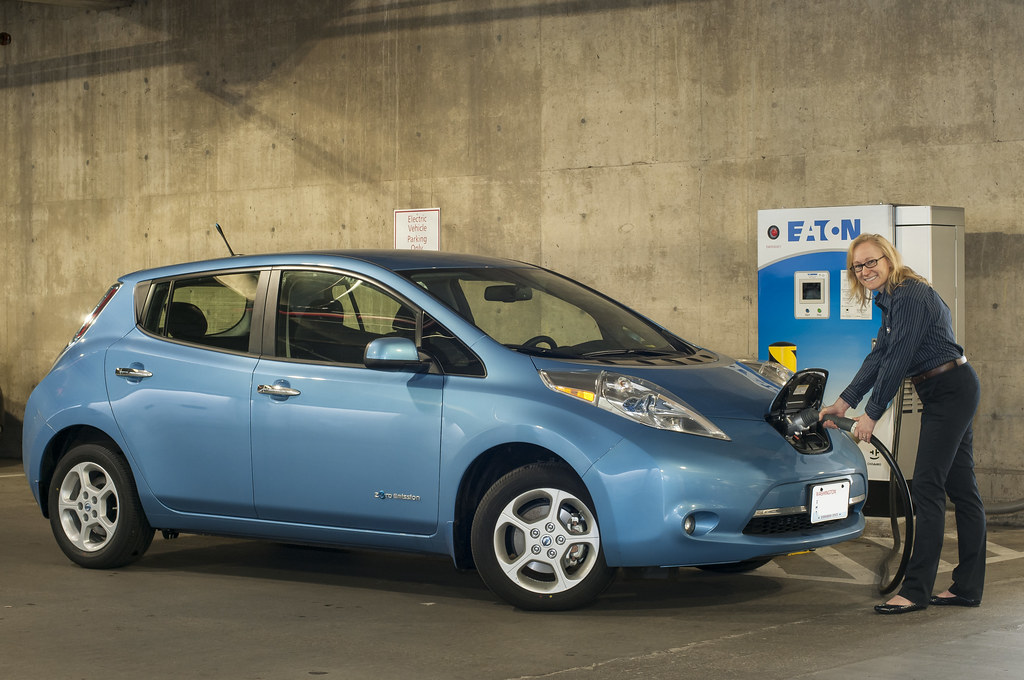
4. Nissan Leaf (2018 Version): Mainstreaming Recycled Materials in the Electric Revolution
The Nissan Leaf, a pioneer in the mass-market electric vehicle segment, further solidified its environmental credentials with its 2018 version, which made significant strides in incorporating recycled plastics and bio-based materials, particularly within its interior. This thoughtful integration showcased how mainstream car manufacturers could champion sustainability without compromising on performance, affordability, or aesthetic appeal, proving that green initiatives can be scalable and appealing to a broad consumer base.
A key highlight of the Leaf’s sustainable interior design is the innovative use of recycled PET bottles for its seats and carpets. This approach not only diverts plastic waste from landfills and oceans but also transforms it into durable, aesthetically pleasing components that meet the rigorous standards of automotive comfort and longevity. It’s a tangible demonstration of the circular economy in action, where waste is redefined as a valuable resource, closing the loop on material lifecycles.
In addition to recycled plastics, the Leaf’s dashboard components ingeniously utilize bio-fibers. These bio-based materials significantly reduce the reliance on petroleum-based plastics, which are known for their finite nature and energy-intensive production processes. By choosing bio-fibers, Nissan reduces the car’s overall environmental impact and fosters a healthier, more natural cabin environment, appealing to consumers increasingly concerned about the provenance of the materials within their vehicles.
The conscious decision to incorporate these sustainable materials allows the Nissan Leaf to maintain high durability and aesthetics, ensuring that the vehicle feels premium and robust, not compromised. It showcases a practical, effective pathway for how large-scale manufacturers can integrate sustainable practices into their core product lines, offering an eco-friendly option that doesn’t demand a premium on quality or price. The 2018 Leaf thus became a powerful testament to the viability of sustainable materials in mainstream electric vehicles.
Car Model Information: 2014 Nissan Frontier S
Name: Nissan Leaf
Caption: A second generation Nissan Leaf
Manufacturer: Nissan
Production: October 2010 – present
ModelYears: 2011–present
Class: Unbulleted list
BodyStyle: Unbulleted list
Layout: Front-engine, front-wheel-drive layout
Predecessor: Unbulleted list
Categories: 2020s cars, All articles containing potentially dated statements, All articles with dead external links, Articles containing Japanese-language text, Articles containing potentially dated statements from December 2015
Summary: The Nissan Leaf (Japanese: 日産・リーフ, Hepburn: Nissan Rīfu; stylized as LEAF) is a battery-electric car manufactured by Nissan, produced since 2010. It was offered exclusively as a 5-door hatchback until 2025, which since then has become a crossover SUV model. The term “LEAF” serves as a backronym to leading environmentally-friendly affordable family car.
The Leaf was unveiled on 1 August 2009 as the world’s first mass market electric and zero-emission vehicle. Among other awards and recognition, it received the 2010 Green Car Vision Award, the 2011 European Car of the Year, the 2011 World Car of the Year, and the 2011–2012 Car of the Year Japan. The Leaf’s range on a full charge has been steadily increased from 117 km (73 miles) to 364 km (226 miles) (EPA rated) by the use of larger battery packs and several minor improvements.
As of September 2021, European sales totalled more than 208,000, and as of December 2021, over 165,000 had been sold in the U.S., and 157,000 in Japan. Global sales across both generations totalled 577,000 by February 2022. The Leaf was the world’s all-time top selling plug-in electric car until it was surpassed in early 2020 by the Tesla Model 3.
Get more information about: Nissan Leaf
Buying a high-performing used car >>>
Brand: Nissan Model: Leaf
Price: $11,685 Mileage: 131,197 mi.

5. Morgan Plus 4: A Timeless Craftsmanship with a Wood-Based Heart
The Morgan Plus 4 stands as an enduring emblem of automotive heritage, unique in its unwavering commitment to an ash wood frame – a tradition meticulously maintained by Morgan Motor Company for decades. In an age dominated by steel and aluminum monocoques, Morgan’s dedication to wood is not merely a nostalgic nod to the past but a conscious choice rooted in the material’s inherent properties, blending artisanal craftsmanship with pragmatic engineering to create a vehicle that is both elegant and remarkably functional.
Ash wood, the chosen material for the Plus 4’s frame, is revered for its exceptional strength, inherent lightness, and natural flexibility. These properties make it an ideal choice for the car’s chassis, providing structural integrity that has stood the test of time, alongside a degree of compliance that contributes to the car’s distinctive ride quality. The wooden frame acts as a strong yet forgiving backbone, embodying a harmonious balance between traditional techniques and modern performance requirements.
The unique design philosophy, anchored by this wood-based construction, appeals profoundly to automotive enthusiasts who cherish individuality, history, and a tangible connection to the art of car-making. Each Morgan Plus 4 is not just a car; it’s a testament to bespoke craftsmanship, where the natural character of the wood is celebrated as an integral part of its identity, making every vehicle distinctly unique and imbuing it with a soul often absent in mass-produced automobiles.
Furthermore, beyond its aesthetic and structural contributions, the wood-based construction of the Morgan Plus 4 inherently reduces its carbon footprint. Wood, as a naturally renewable resource, contrasts sharply with the energy-intensive production of metals, aligning the vehicle with modern sustainability goals in a surprisingly traditional way. It serves as a powerful reminder that sometimes, the most innovative solutions can be found by looking back at time-honored practices and re-evaluating their contemporary relevance.
Thus, the Morgan Plus 4 is more than just a car; it is a living testament to the beautiful synergy between traditional craftsmanship and modern automotive engineering. It offers a timeless, sophisticated design paired with a sustainable heart, proving that enduring quality and environmental consciousness can gracefully coexist in the pursuit of automotive excellence.”
, “_words_section1”: “1948
The initial pioneers of sustainable automotive materials have laid a powerful foundation, demonstrating that a greener future for mobility is not just aspirational but eminently achievable. Yet, the journey toward truly green manufacturing is far from over. The real revolution now delves into the broader implications, benefits, and persistent challenges that accompany the widespread adoption of these unique materials. It’s about not only showcasing individual breakthroughs but also understanding how these innovations reshape supply chains, consumer expectations, and the very philosophy of automotive design. This next chapter in our exploration unveils five more visionary innovations, dissecting their impact and peering into the future trajectory of sustainable material science in the relentless pursuit of truly green mobility.
Car Model Information: 2023 Hyundai SANTA FE SEL 2.4
Caption: 1963 Morgan Plus 4
Name: Morgan Plus 4
Manufacturer: Morgan Motor Company
Production: 1950–1969,4,584 produced,1985–2000,2005–2020
Class: Sports car
BodyStyle: convertible (car)
Layout: Front mid-engine, rear-wheel drive layout
Engine: ubl
Length: 145 in
Abbr: on (Super Sports)
Width: 56 in
Assembly: Malvern, Worcestershire,England,United Kingdom
Height: 52 in
Wheelbase: 96 in
Weight: 1848 lb
Related: Morgan 4/4,Morgan Plus 8
Successor: Morgan Plus Four
Categories: 1960s cars, 1980s cars, 1990s cars, 2000s cars, 2010s cars
Summary: The Morgan Plus 4 is a sports car produced by the Morgan Motor Company. It is a more powerful and, in the case of the earlier cars, a slightly longer version of the company’s previous 4/4 model. Plus 4 production ran from 1950 to 1969. It was revived in 1985 and filled the gap between the 4/4 and the Plus 8 until 2000. It was again produced from 2005 until it was replaced in 2020 by the “all new” Plus Four built on a bonded aluminium platform.
Get more information about: Morgan +4
Buying a high-performing used car >>>
Brand: Morgan Model: Plus 4
Price: $21,499 Mileage: 18,514 mi.
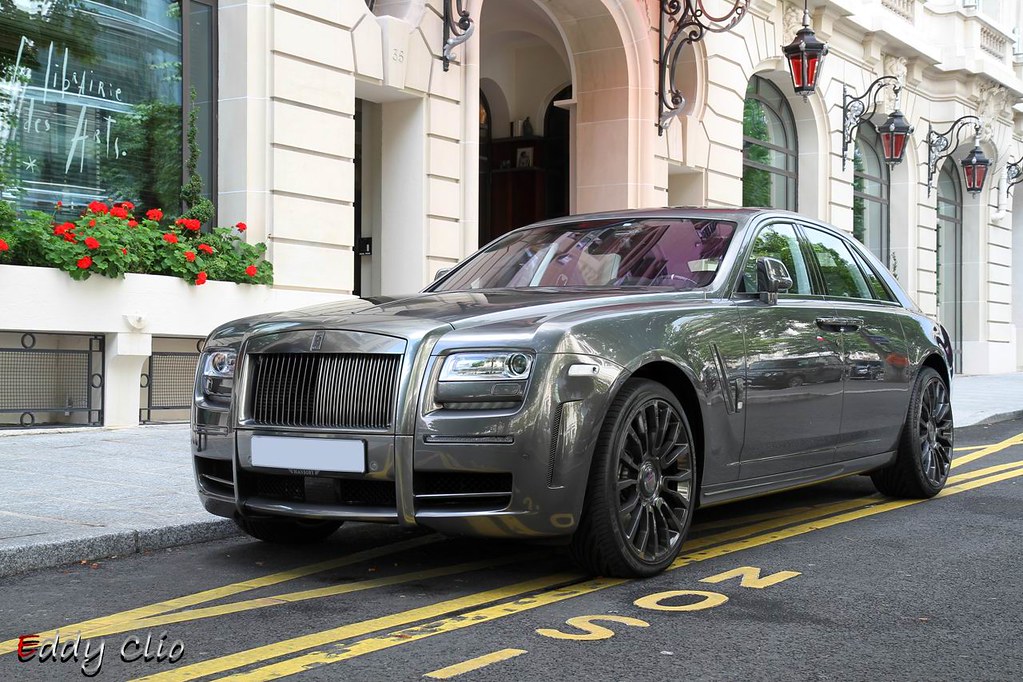
6. Rolls-Royce Spectre: Luxury Reimagined with Scraps and Sustainability
Even at the pinnacle of automotive luxury, the winds of change are blowing, proving that sustainability is not just for the mass market but a universal imperative. The all-electric Rolls-Royce Spectre stands as a testament to this evolving ethos, seamlessly integrating groundbreaking material innovations that redefine opulence for a new era. Here, environmental responsibility isn’t an afterthought; it’s woven into the very fabric of bespoke design.
Step inside the Spectre, and your gaze is immediately drawn to the vibrant black wood veneer, affectionately named “obsidian ayous.” This isn’t Mother Nature’s direct creation; rather, it’s a stroke of ingenious design from Rolls-Royce artisans. They’ve meticulously taken wood scraps, materials that would typically be discarded from the production floor, and transformed them. These scraps are carefully stacked, colored, and reinvented into a new, unique material that is both aesthetically captivating and deeply eco-conscious.
Anders Warming, design director at Rolls-Royce, highlighted this transformative process, stating, “It’s a man-made wood that’s more sustainable.” He further emphasized the brand’s commitment to thoughtful sourcing: “We’re trying to be mindful of the way we source materials. I am looking for things that aesthetically inspire but at the same time also do the right thing.” This philosophy extends beyond the veneer, with the Spectre’s aluminum wheels proudly crafted from recycled metals, underscoring a holistic approach to sustainable luxury.
The commitment to greener vehicles at Rolls-Royce is a collective effort, driven by both internal values and growing customer demand. Mihiar Ayoubi, director of engineering, affirmed, “Sustainability is one of the targets we’re trying to fulfill.” He stressed the rigorous standards applied to these new materials, noting, “We’re experimenting a lot but these recycled materials have to fulfill all safety issues and 100% meet Rolls-Royce quality.” This ensures that the pursuit of sustainability never compromises the marque’s legendary standards.
This dedication isn’t isolated to the Spectre; it’s a recurring theme across the Rolls-Royce portfolio. The Phantom Platino, which debuted just last year, features rear seats upholstered in a fabric made from bamboo fibers and silk. As Warming proudly stated, this makes the material “wholly sustainable” and elevates the luxury experience. These initiatives powerfully demonstrate that for Rolls-Royce, embracing environmental consciousness is not just a trend, but a profound responsibility woven into the very essence of ultimate luxury.
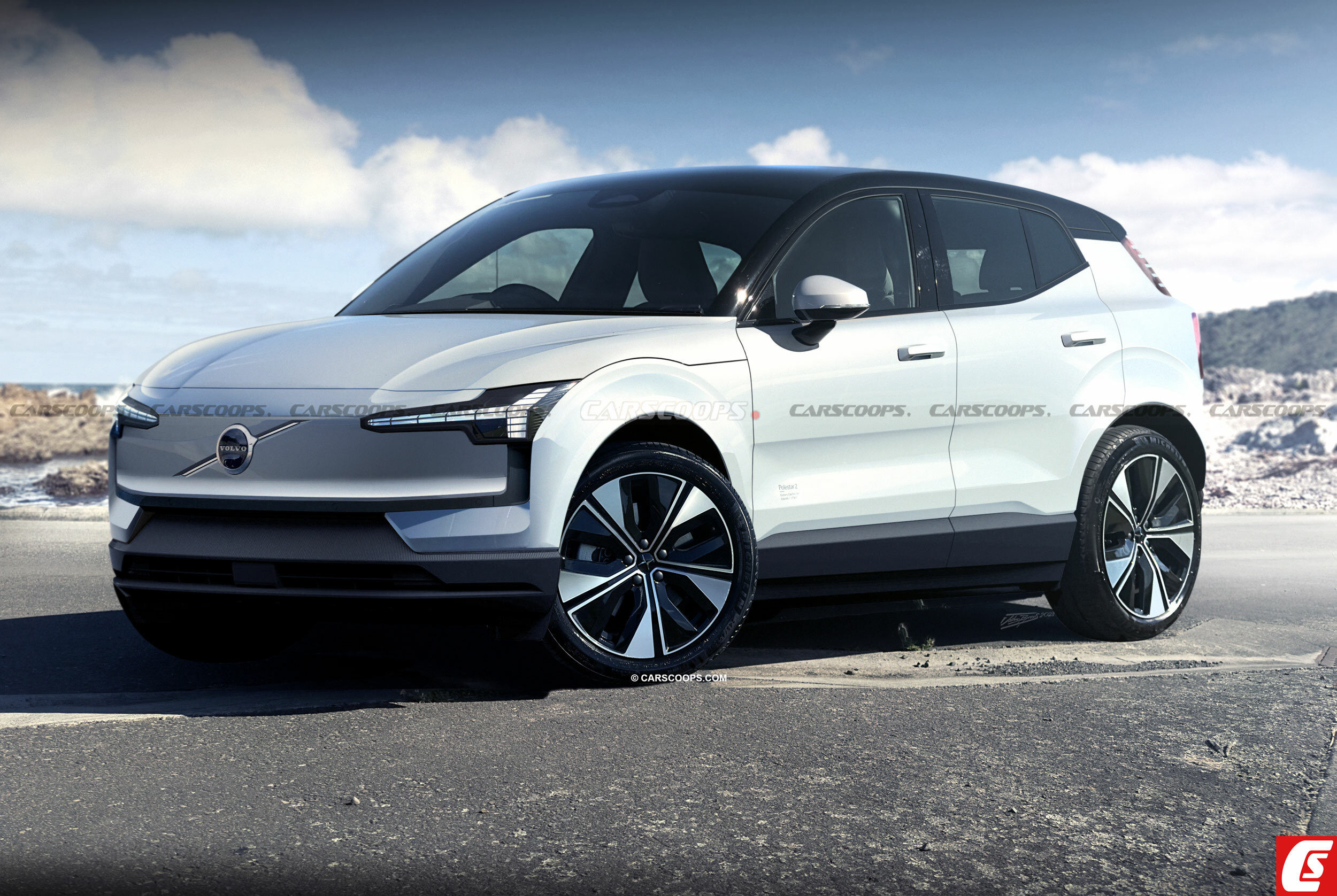
7. Volvo EX30: The Eco-Conscious Urban Warrior Forged from Recycled Innovation
Volvo has long been synonymous with safety, but with the EX30, it firmly plants its flag as a leader in sustainable automotive manufacturing. This all-electric compact SUV boasts an extraordinary claim: it has the highest recycled content of any Volvo to date. It represents a new benchmark for how mainstream vehicles can integrate a vast array of sustainable materials, pushing the boundaries of what’s possible in mass-produced, environmentally responsible cars.
The statistics speak volumes about Volvo’s commitment. Nearly a quarter of the aluminum used in the EX30, and a significant 17% of its steel, comes from recycled sources. Furthermore, approximately 17% of the plastic throughout the vehicle – from critical interior components to robust exterior bumpers – is derived from recyclables. These aren’t incremental adjustments; they represent a fundamental reimagining of the material inputs that construct a modern automobile, significantly reducing reliance on virgin resources.
Perhaps one of the most innovative and visually striking aspects of the EX30’s interior is its use of shredded denim fibers. What was once discarded as common waste product – recycled jeans – is ingeniously twisted into a stylish yarn, then linked together to create distinctive and appealing interior elements. This approach transforms waste into high-design, making a powerful statement about the potential for beauty and utility in discarded materials.
Beyond denim, the EX30’s cabin further exemplifies material innovation with a flax and wool blend, which includes recycled polyester, used for the doors, dashboard, and seats. Volvo’s commitment extends to even more unconventional sources, with designers collaborating to utilize pine resin harvested from forests in Sweden and Finland for other sustainable interior components. This holistic approach is not just about material choice but about a comprehensive strategy for environmental stewardship.
Anders Kärrberg, Volvo’s global head of sustainability, underscored the significance of these advancements, stating, “A lot of the efforts we’re making in this car will be carried over to other cars.” He also highlighted a crucial societal shift: “We’re now seeing a trend where consumers are asking, ‘How do you source the material?’ ‘How do you put this together?'” With an ambitious goal for 95% of the EX30 to be recoverable at the end of its life, Volvo is setting an undeniable precedent for the future of sustainable, circular automotive manufacturing, driven by both consumer demand and an urgent sense of environmental responsibility.
Car Model Information: 2025 Volvo EX30 Twin Motor Ultra
Name: Volvo EX30
Manufacturer: Volvo Cars
Production: 2023–present
ModelYears: ubl
Assembly: ubl
Class: Subcompact crossover SUV
BodyStyle: hatchback
Layout: ubl
Platform: Sustainable Experience Architecture platform
Related: ubl
Motor: permanent magnet synchronous
Battery: Lithium_iron_phosphate_battery
ElectricRange: unbulleted list
Wheelbase: cvt
Length: cvt
Width: cvt
Height: cvt
Weight: cvt
Predecessor: Volvo C30 DRIVe Electric
Categories: All-wheel-drive vehicles, Articles with short description, CS1 Brazilian Portuguese-language sources (pt-br), CS1 Dutch-language sources (nl), CS1 Turkish-language sources (tr)
Summary: The Volvo EX30 is a battery electric subcompact crossover SUV manufactured by Volvo Cars. Revealed in June 2023, the EX30 is the smallest Volvo vehicle currently on sale, positioned below the XC40 and C40 crossovers. It is produced in China and Belgium and is related to the Zeekr X and the Smart #1, which are similar in size and developed from Geely’s SEA platform. The vehicle is sold globally.
Get more information about: Volvo EX30
Buying a high-performing used car >>>
Brand: Volvo Model: EX30
Price: $45,700 Mileage: 1,377 mi.
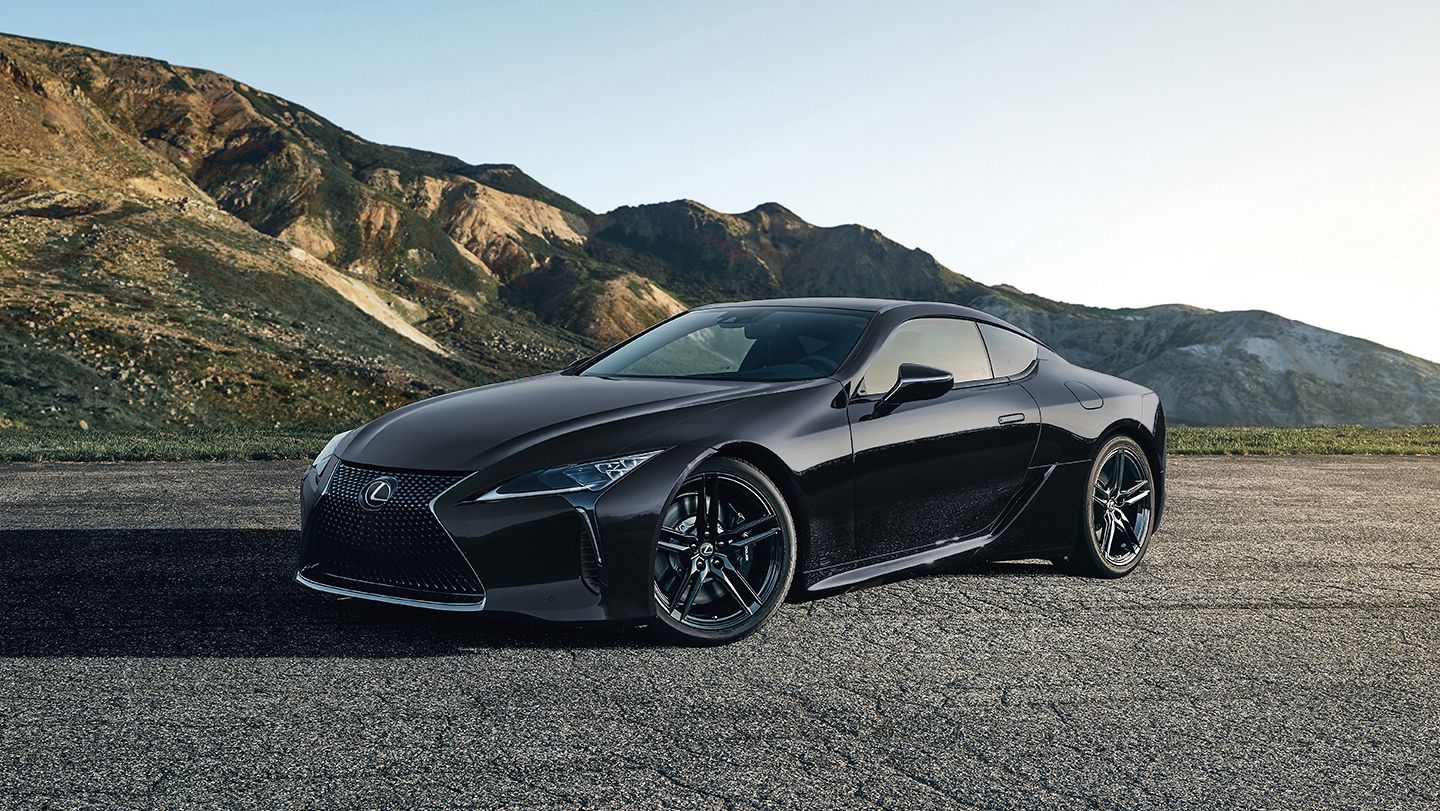
8. Lexus LF-ZC Concept: Bamboo’s Modern Resurgence for a Circular Future
While the Toyota Setsuna showcased bamboo’s conceptual artistry, the Lexus LF-ZC concept, unveiled in 2023 with a production launch slated for 2026, signals bamboo’s serious entry into the future of luxury mobility. This vehicle embraces an “extensive use of bamboo,” positioning the rapidly renewable grass not merely as an aesthetic accent but as a fundamental, high-performance component in a cutting-edge electric vehicle.
Bamboo’s designation as a “circular resource” underpins its allure for Lexus. Its remarkable growth rate, unparalleled ability to absorb significant amounts of carbon dioxide, and the ease with which it can be reliably harvested make it an environmental champion. For a brand like Lexus, committed to both innovation and luxury, integrating such a resource demonstrates a forward-thinking design philosophy that deeply resonates with the principles of a sustainable, circular economy.
The extensive application of bamboo in the LF-ZC Concept promises more than just a reduction in environmental impact. It opens doors to unique design possibilities, lending interiors a warm, organic, and sophisticated aesthetic that stands apart from conventional materials. This choice reflects a growing consumer desire for natural elements within their vehicles, fostering a connection to the environment even in a high-tech cabin.
As bamboo processing technologies advance, its versatility for various automotive applications expands, moving beyond interior panels to potentially structural or semi-structural elements. The LF-ZC Concept, by making such a bold and public commitment to bamboo, validates its place as a viable, high-quality material for the next generation of luxury electric vehicles. It’s a powerful statement that premium brands can indeed achieve both exquisite design and profound ecological responsibility.
Ultimately, Lexus’s commitment with the LF-ZC reaffirms that the future of automotive materials will increasingly blend performance with planetary stewardship. This modern integration of bamboo serves as a compelling example of how established luxury marques are actively shaping a sustainable future, not with token gestures, but with integral, design-forward material choices that redefine what a luxury car can and should be.
Car Model Information: 2023 Honda Accord LX
Categories: All articles with dead external links, All articles with unsourced statements, Articles with dead external links from October 2010, Articles with short description, Articles with unsourced statements from November 2013
Summary: The Lexus LF line is a series of concept cars built by Lexus, the luxury vehicle division of Toyota Motor Corporation. The “LF” designation refers to Lexus Future. The LF Series vehicles features coupes/convertibles, including: the LF-A, the LF-A Roadster, LF-LC, LF-CC, and the LF-C; sedans: the LF-S, LF-Sh, and LF-Gh; crossover SUVs: the LF-X and LF-Xh; and hatchbacks: the LF-Ch. The first concept vehicle of the LF Series, the LF-X, appeared in 2003. The LF Series utilizes L-finesse, a design philosophy named for “Leading Edge” and “finesse”, which debuted on the LF Series concepts and later extended to all new production Lexus vehicles. New vehicle technologies on the LF Series include advanced instrumentation, multiple driver-selected vehicle configurations, hybrid and experimental powertrains, and unconventional driver interface designs. The vehicles also feature new design cues which derive from the L-finesse design language of “Intriguing Elegance” (純), “Incisive Simplicity” (妙), and “Seamless Anticipation” (予). Several of the LF concept vehicles have appeared close to their production counterparts, while the design cues of other LF concepts appeared on more distinctly different production vehicles.
Get more information about: Lexus LF
Buying a high-performing used car >>>
Brand: Lexus Model: LF-ZC Concept
Price: $25,677 Mileage: 15,933 mi.
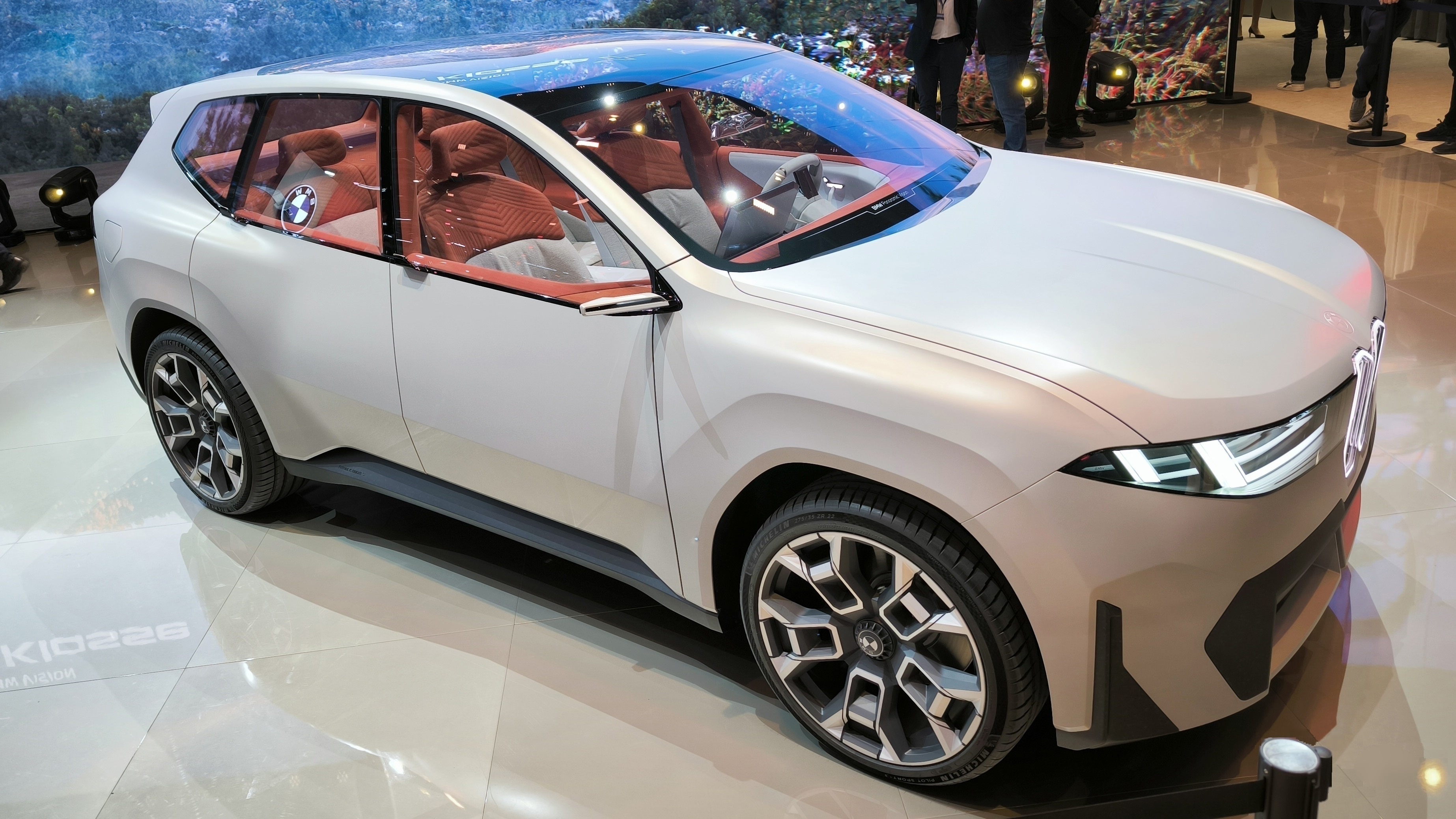
9. BMW Vision Neue Klasse X: Plant-Powered Interiors and a Full Lifecycle Commitment
The BMW Vision Neue Klasse X, unveiled as the probable template for the upcoming iX3, represents a significant leap in BMW’s approach to sustainable design, particularly within its highly anticipated electric SUV lineup. This concept vehicle is not just about electric propulsion; it’s a profound statement on how material innovation can extend environmental responsibility across the entire lifecycle of a car, from its immediate components to its eventual recyclability.
At the heart of its innovative interior lies a new material called Verdana. BMW describes Verdana as “completely plant-based, mineral-based, and petroleum-free,” marking a radical departure from traditional petroleum-based plastics and synthetic fabrics. This commitment to plant and mineral sources for interior surfaces ensures a significantly reduced carbon footprint and eliminates reliance on finite fossil resources, aligning perfectly with BMW’s vision for a truly sustainable future.
Further demonstrating a pioneering approach to resource management, the Vision Neue Klasse X incorporates marine plastics into its secondary components. Astonishingly, these plastics, often sourced from discarded fishing nets, account for 30 percent of some elements within the vehicle. This initiative directly addresses the global challenge of ocean pollution, transforming harmful waste into valuable, high-quality automotive parts and showcasing an inspiring commitment to a circular economy.
Beyond material sourcing, BMW is deeply invested in the vehicle’s entire environmental footprint. The marque explicitly states that “The choice of materials and construction method enable easier disassembly of components and improved recyclability.” This forward-thinking design philosophy ensures that at the end of its life, the Vision Neue Klasse X can be efficiently deconstructed, with its materials readily entering new life cycles. This is further exemplified by the side skirts and front and rear apron attachments, which are also produced from recycled mono-materials, streamlining the recycling process.
The BMW Vision Neue Klasse X, therefore, is more than an electric SUV concept; it’s a comprehensive blueprint for sustainable automotive engineering. By embracing plant-based materials, rescuing marine plastics, and designing for inherent recyclability, BMW is setting a formidable standard for how future vehicles can embody environmental stewardship at every stage of their existence, proving that cutting-edge performance can coexist harmoniously with profound ecological responsibility.
Car Model Information: 2023 Hyundai SANTA FE SEL 2.4
Name: BMW iX3 (NA5)
Manufacturer: BMW
ModelCode: NA5
Production: 2026 (to commence)
Assembly: Debrecen
Designer: Adrian van Hooydonk
Class: Compact luxury crossover SUV
BodyStyle: SUV
Layout: Dual-motor, all-wheel-drive
Platform: Neue Klasse platform
Related: BMW i3 (NA0)
Motor: Externally-excited synchronous motor
Battery: Lithium nickel manganese cobalt oxides,lithium-ion
Wheelbase: cvt
Length: cvt
Width: cvt
Height: cvt
Weight: cvt
Predecessor: BMW iX3 (G08)
Sp: uk
Charging: DC: 400 kW
ElectricRange: ubl
Powerout: cvt
Categories: All-wheel-drive vehicles, All articles to be merged, All stub articles, Articles to be merged from September 2025, Articles with short description
Summary: The BMW iX3 (NA5) is a battery electric compact luxury crossover SUV manufactured by BMW, succeeding the X3-based G08. Unlike its predecessor, it is built on the Neue Klasse platform, no longer sharing its platform with its ICE counterpart (G45). A long-wheelbase version, codenamed NA6, is slated to release in the Chinese market in 2026.
Get more information about: BMW iX3 (NA5)
Buying a high-performing used car >>>
Brand: BMW Model: Vision Neue Klasse X
Price: $21,499 Mileage: 18,514 mi.
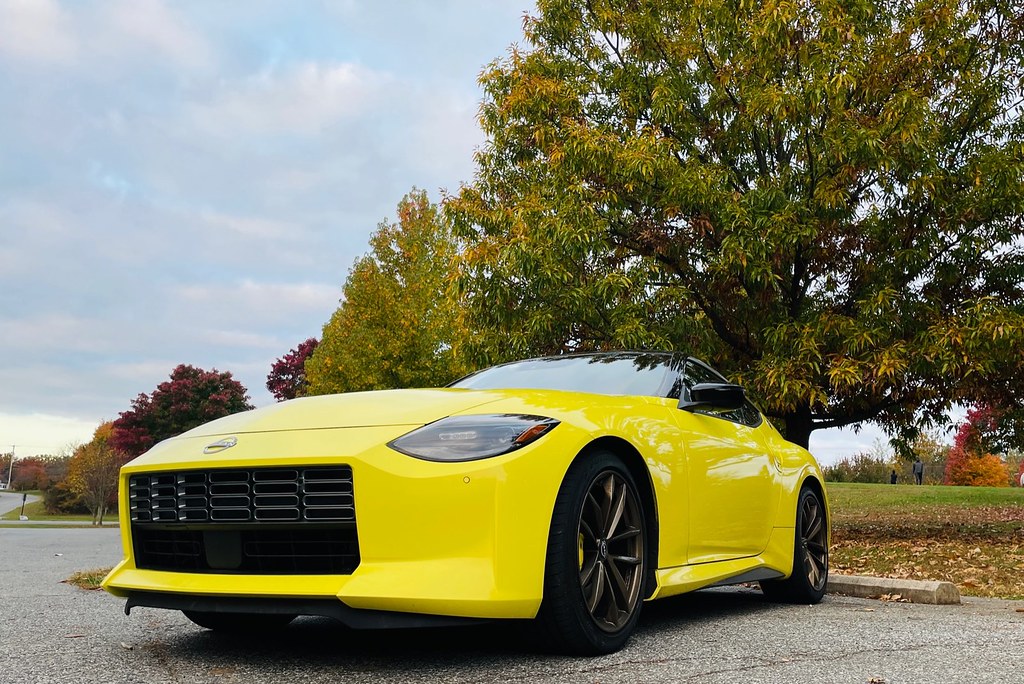
10. The Evolution of Automotive Leather: From Tradition to Traceable Sustainability
For decades, leather has been the undisputed standard for luxury car interiors, embodying comfort, sophistication, and durability. However, in an increasingly environmentally conscious world, its provenance and production methods have come under intense scrutiny. This challenge has driven a critical evolution in the automotive industry, not necessarily towards outright replacement, but towards a radical reimagining of how leather is sourced and produced, leading to the rise of “sustainable leather.”
The discourse around leather alternatives has been vibrant, with options like “vegan leather” emerging, such as Bentley’s exploration of Vegea, made from grape skins, seeds, and stalks. Yet, these alternatives are not without their own environmental complexities. As ESG and sustainability expert Frank Zambrelli noted, many synthetic “vegan” materials can be detrimental, stating, “A lot of ‘vegan’ materials are awful. They’re carcinogenic for workers. The polymers are terrible for the environment and will be with us for eons,” highlighting the need for careful material evaluation beyond superficial labels.
Against this backdrop, the focus has shifted towards making traditional leather production genuinely sustainable. Leading automakers, including Porsche, BMW, and Aston Martin, are proactively joining organizations like the Leather Working Group (LWG), an England-based nonprofit that rigorously certifies leather supply chains. This collaboration signifies a collective commitment to transparency and ethical practices, moving beyond mere claims to verifiable standards.
Aston Martin, through its design director Miles Nurnberger, confidently asserts that high-quality, modern leather production is indeed sustainable. Referring to their longtime supplier, Bridge and Weir, Nurnberger stated, “more than 98% of its rawhides are sourced locally from ‘responsible suppliers with 100% traceability, as certified by Leather Working Group.'” This includes crucial guarantees such as “zero risk of deforestation,” directly addressing key environmental concerns associated with past leather production.
Porsche’s mandatory material-specific specifications for leather, implemented since 2022, further illustrate this industry-wide shift. Suppliers must now disclose the raw material’s country of origin and undergo external audits against LWG’s sustainability standards. This concerted effort by luxury brands underscores a profound commitment: leather can remain a legitimate, environmentally responsible choice, provided it adheres to the highest standards of traceability, ethical sourcing, and minimized ecological impact, proving that tradition and sustainability can gracefully coexist through conscientious innovation.
The automotive industry stands at an exhilarating precipice, where innovation is no longer solely about speed or power, but about responsibility and ingenuity in equal measure. From repurposed wood scraps gracing the opulent interiors of a Rolls-Royce to the ingenious integration of recycled denim in a Volvo, and the sophisticated use of bamboo in a Lexus, the palette of materials is richer, more diverse, and profoundly more sustainable than ever before. This isn’t merely a fleeting trend; it’s a foundational recalibration of how we conceive, design, and build the vehicles that will carry us into tomorrow. The journey towards a greener, smarter, and more ethically constructed automotive future has not just begun; it’s accelerating, promising a world where every car is a testament to both human innovation and respect for the planet we call home.

